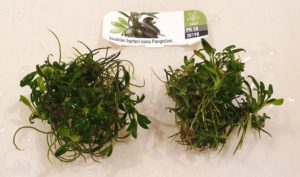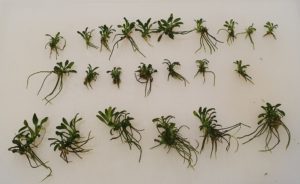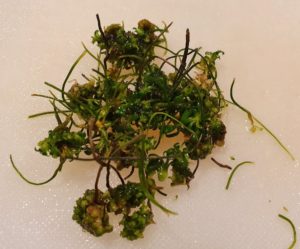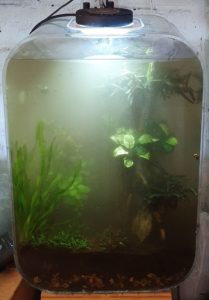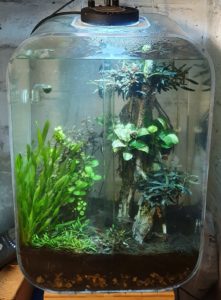‘Pangolino’ from Dennerle is thought to be the anubias with the smallest leaves and thereby very suitable for nanotanks. I’ve been looking for this plant for a long time but it has been consistently unavailable until very recently when I noticed some in stock at Horizon Aquatics. As a bonus Horizon is also a sponsor of the UK Aquatic Plant Society so I was happy to be able to pick up some Pangolino and support the society at the same time. The pots arrived promptly and in great condition.
Preparing tissue culture plants for the aquarium
As usual, tissue culture plants arrive in sealed pots suspended in a nutrient jelly. You rinse off the jelly, separate out the individual plantlets, cutting them apart if necessary and trimming off any debris, then you’re ready to plant. I have noticed that it’s not unusual to get some strange growth patterns included in amongst normal growth form plants with tissue culture pots, presumably because the plants don’t always grow completely correctly in culture. There was a pretty good mass of this material to be removed with the Pangolino, but not to worry, there were still a lot of quality individual plantets to be had.
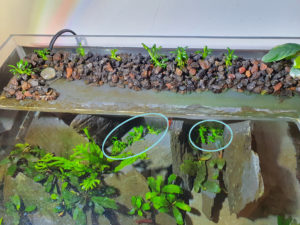
Planting emersed and submersed
My main goal with the Pangolino is to try to grow it emersed in the river run of the Shrimphaus, where the hope is the small compact leaves will keep it from drying out and will also maintain a reasonable size anubias for the space. Eight of the pangolino plantets are planted emersed in lava rock on the shelf of the river run. With so many nice plantlets I couldn’t resist also planting some submersed – these are the five circled in cyan in the picture. Tissue culture plants are something of a hybrid situation between emersed and submersed growth so we’ll see how those compare as the plants develop.
